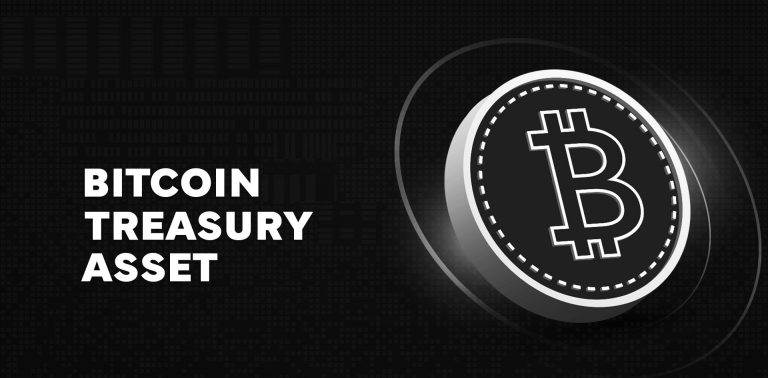
The Blockchain Group, a Paris-based cryptocurrency company and Europe’s first Bitcoin treasury firm, announced on June 9, 2025, plans to raise €300 million (approximately $340 million) to expand its Bitcoin treasury. This follows a recent acquisition of $68 million worth of Bitcoin, bringing their total holdings to 1,471 BTC, valued at over $154 million. The capital raise, structured as an “At the Market” (ATM) offering inspired by U.S. practices, will occur in tranches with shares sold at market conditions, capped at 21% of daily trading volume.
Partnered with TOBAM, a Paris-based asset manager, the funds aim to boost Bitcoin per share and support long-term growth, positioning the company as a key player in Europe’s institutional crypto adoption. This move aligns with a broader trend of corporate Bitcoin accumulation, as seen with firms like Strategy and Metaplanet. The Blockchain Group’s $340M raise to bolster its Bitcoin treasury has significant implications for the crypto market and highlights a growing divide in corporate strategies regarding cryptocurrency adoption.
The move signals increasing confidence among European institutions in Bitcoin as a strategic asset. By amassing 1,471 BTC and planning further acquisitions, The Blockchain Group is positioning itself as a pioneer in Europe, potentially encouraging other firms to follow suit. This aligns with global trends, as companies like MicroStrategy (205,000 BTC as of late 2024) and Metaplanet have similarly adopted Bitcoin as a treasury reserve asset to hedge against inflation and currency devaluation.
Register for Tekedia Mini-MBA edition 19 (Feb 9 – May 2, 2026): big discounts for early bird.
Tekedia AI in Business Masterclass opens registrations.
Join Tekedia Capital Syndicate and co-invest in great global startups.
Register for Tekedia AI Lab: From Technical Design to Deployment (next edition begins Jan 24 2026).
The influx of $340M into Bitcoin could drive demand, potentially pushing prices higher, especially given Bitcoin’s finite supply (21 million cap). As of June 2025, Bitcoin’s price hovers around $100,000-$104,000, and such institutional buying could sustain or amplify this rally. The structured ATM offering, capped at 21% of daily trading volume, minimizes market disruption but signals sustained buying pressure over time.
Europe’s regulatory environment is evolving, with France’s pro-crypto stance under figures like Macron fostering such initiatives. The Blockchain Group’s move could pressure regulators to clarify rules around corporate crypto holdings, potentially shaping EU-wide policies. It reflects a hedge against fiat currency risks, particularly in light of global economic uncertainties like inflation or geopolitical tensions.
The partnership with TOBAM, a traditional asset manager, bridges crypto and conventional finance, legitimizing Bitcoin as an institutional asset. This could attract more conservative investors, expanding Bitcoin’s investor base. The focus on “Bitcoin per share” growth introduces a new metric for valuing companies with crypto treasuries, potentially influencing stock valuations in the sector.
The Blockchain Group’s strategy underscores a growing divide between corporations embracing Bitcoin and those skeptical or hesitant: Firms like The Blockchain Group, MicroStrategy, and Metaplanet view Bitcoin as a store of value and inflation hedge, integrating it into their balance sheets. They benefit from Bitcoin’s price appreciation but face volatility risks. These companies often operate in tech or finance, with leadership that understands blockchain’s potential, giving them a first-mover advantage in a crypto-friendly market.
Many traditional corporations, especially in conservative industries like manufacturing or retail, remain wary of Bitcoin’s volatility, regulatory uncertainty, and environmental concerns tied to mining. These firms prioritize cash, bonds, or other assets for treasuries, viewing crypto as speculative. They risk missing out on Bitcoin’s long-term gains but avoid short-term losses.
The divide creates a split in investor sentiment. Pro-Bitcoin firms attract crypto enthusiasts and growth-oriented investors but may alienate risk-averse shareholders. Conversely, traditional firms appeal to stability-focused investors but may lag in innovation. This polarization could lead to a bifurcated market where “Bitcoin-native” companies trade at a premium during bull runs, while skeptics face pressure to adapt or lose competitive edge.
The adoption is uneven globally. The U.S. and parts of Asia (e.g., Japan’s Metaplanet) lead in corporate Bitcoin strategies, while Europe is catching up. Regions with stricter regulations (e.g., China) or less crypto awareness lag, creating a global divide in corporate crypto integration. The Blockchain Group’s raise strengthens the case for Bitcoin as a corporate treasury asset, potentially catalyzing further adoption in Europe and beyond. However, it widens the gap between crypto-forward and traditional firms, with implications for market dynamics, investor preferences, and regulatory frameworks. The divide will likely deepen as Bitcoin’s price trajectory and regulatory clarity evolve, forcing companies to choose sides in the crypto revolution.



